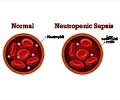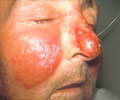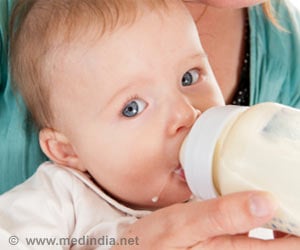The presence of Streptococcus in the placenta was associated with a two- to three-fold increase in the probability of neonatal unit admission.

Placental Streptococcus agalactiae DNA is associated with neonatal unit admission and fetal pro-inflammatory cytokines in term infants
Go to source) Previous research by the team at the University of Cambridge and Rosie Hospital, Cambridge University Hospitals NHS Foundation Trust, identified GBS in the placenta of around 5% of women prior to the onset of labor. Although it can be treated with antibiotics, unless screened, women will not know they are carriers.
‘GBS is present in one out of every 200 infants admitted with sepsis, nearly ten times more prevalent than previously thought. #Streptococcus #sepsis #infanthealth’





GBS can cause sepsis, a life-threatening reaction to an infection, in the newborn. Worldwide, GBS accounts for around 50,000 stillbirths and as many as 100,000 infant deaths per year.
GBS Presence in Placenta and Neonatal Unit Admissions
In a study published today in Nature Microbiology, the team looked at the link between the presence of GBS in the placenta and the risk of admission of the baby to a neonatal unit. The researchers re-analysed data available from their previous study of 436 infants born at term, confirming their findings in a second cohort of 925 pregnancies.In the USA, all pregnant women are routinely screened for GBS and treated with antibiotics if found to be positive. In the UK, women who test positive for GBS are also treated with antibiotics – however, only a minority of pregnant women are tested for GBS, as the approach in the UK is to obtain samples only from women experiencing complications, or with other risk factors.
There are a number of reasons why women in the UK are not screened, including the fact that detecting GBS in the mother is not always straightforward and only a small minority of babies exposed to the bacteria were thought to become ill. A randomized controlled trial of screening for GBS for treatment with antibiotics is currently underway in the UK.
Dr. Francesca Gaccioli from the Department of Obstetrics & Gynecology at the University of Cambridge said: “In the UK, we’ve traditionally not screened mothers for GBS, but our findings – that significantly more newborns are admitted to the neonatal unit as a result of GBS-related sepsis than was previously thought – profoundly changes the risk/benefit balance of universal screening.”
To improve detection, the researchers have developed an ultrasensitive PCR test, which amplifies tiny amounts of DNA or RNA from a suspected sample to check for the presence of GBS. They have filed a patent with Cambridge Enterprise, the University of Cambridge’s technology transfer arm, for this test.
Advertisement
When the researchers analysed serum from the babies’ umbilical cords, they found that over a third showed greatly increased levels of several cytokines – protein messengers release by the immune system. This suggests that a so-called ‘cytokine storm’ – an extreme immune response that causes collateral damage to the host – was behind the increased risk of disease.
Advertisement
Reference:
- Placental Streptococcus agalactiae DNA is associated with neonatal unit admission and fetal pro-inflammatory cytokines in term infants - (https://www.nature.com/articles/s41564-023-01528-2)














